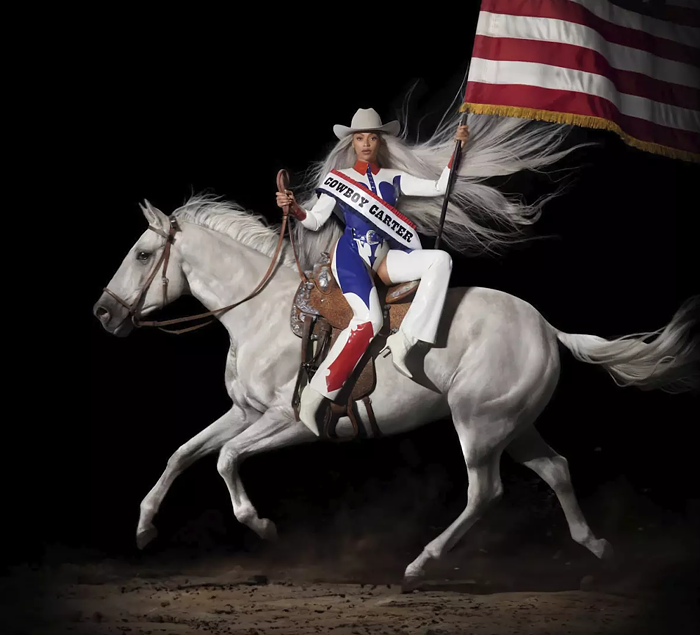An immigrant establishes residence in rural Oregon, preaching an unfamiliar and controversial religious doctrine. He’s accused of advocating free love and leading marathon orgies. His loyal group of followers quickly attracts the ire of the townspeople and the suspicion of surrounding areas, and soon the entire state is implicated. The religious sect and its scandals pose an immediate threat to the region’s wholesome reputation. Following legal challenges, heated altercations, and physical threats, the sect disbands only after violence.
The sect leader’s name was Franz Edmund Creffield, and his followers were called, alternately, God’s Anointed, the Brides of Christ, the Come-outers—or, more popularly, the Holy Rollers. They operated for roughly three years, between 1903 and 1906, mostly around Corvallis, Waldport, and Portland, before meeting their end in Seattle.
Wild Wild Country, the recent Netflix documentary on the Rajneeshees, has the country again talking about that inglorious moment in our state’s history, the story of Oregon’s other controversial religious sect has remained a footnote in local lore. This short-lived sect has inspired at least three nonfiction books—Holy Rollers, Vigilante Newspapers, and Murdering Holiness; a novel, Brides of Eden; and a feature film, How the Fire Fell, directed by Oregon filmmaker Edward P. Davee and starring former Portland musician Joe Haege. Though not as famous as Bhagwan and his red-clad sannyasins, the story of Creffield and his Brides of Christ is nonetheless an important, bizarre tale of fanatics, vigilantes, sex, madness, murder, and suicide.
I. Holiness or Hell

Franz Edmund Creffield was born around 1873. He was of German descent and immigrated to the United States sometime around 1884. Little else is known about his early life until 1899, when he first appeared in Portland, working as an officer in the local chapter of the Salvation Army. The Salvation Army had been active in Portland since 1886, and initially attracted local antagonism for its militaristic style of street evangelicalism. By the turn of the century, however, the Salvation Army had cut back on its raucous sermonizing, focusing instead on serving the poor and ringing bells on street corners. Creffield quickly rose within the ranks, and was posted for brief tours in towns all across Oregon. Resigning from the organization in October 1901, he struck out on his own, preaching holiness to Oregonians. “God called me to preach his will,” Creffield would later say.
Creffield was smaller than average, standing five foot three inches and weighing 135 pounds. He was fluent in English, with blond hair and light blue eyes. After leaving the Salvation Army, he drifted for about a year throughout Oregon, as an itinerant Pentecostal preacher, before landing in Corvallis in late 1902. Sixty miles south of Portland on the west bank of the Willamette River, Corvallis was then a small agricultural town, but eager to grow. In the summer of 1903, the Corvallis Times prophesized: “Corvallis’ best days are to come, and the summit of her prosperity has been far from reached.” What they didn’t foresee was the arrival of Franz Edmund Creffield.
By the end of 1902, Creffield had already attracted his first followers, largely made up of other defectors from the Salvation Army. Among the first to convert were members of the Hurt family: 22-year-old Ida Maud, 21-year-old Frank, 16-year-old Eva Mae, and their mother, Sarah. The Hurt family patriarch, Orlando Victor “O.V.” Hurt, was a respected member of the community—a merchant and a civic leader. He didn’t care at first for Creffield’s teachings, but he accommodated his family’s religious ardor. Others soon joined, swelling the group’s ranks to as many as 27—but there were only about 20 core members. Creffield’s sect, which hadn’t yet been named, consisted of only a handful of families, connected by blood or marriage. Twenty-three-year-old Donna Starr (née Mitchell) moved with her husband Burgess Starr from Portland to Corvallis in 1902. She joined Creffield’s sect, along with her 15-year-old sister Esther Mitchell, who would become one of his most zealous and infamous followers. The majority of Creffield’s disciples were women, but he did attract a handful of men, including Frank Hurt, Sampson Levins, and Milton Lee Campbell.
They met in a rented hall on Main Street or in the homes of members. Creffield preached that the only way to salvation was through sanctification and purification of the soul.
“When you get baptized with fire,” he maintained, “fear of man is burned out, and all you see is the soul plunging into an everlasting, burning, seething hell, and your cry becomes ‘Holiness or hell.’”
Services were frenzied affairs, with followers shouting, crying, and rolling on the floor until all hours of the night, ostensibly possessed by the Holy Ghost. In the summer of 1903, after drawing complaints from neighbors, Creffield and his followers relocated to Smith Island on the Willamette River, south of Corvallis. As they isolated themselves, rumors of scandalous practices began to spread.
Corvallis newspapers had taken to calling them “Holy Rollers,” due to their worship practices, but Creffield had another name for his sect—“God’s Anointed,” who would make way for Christ’s return, heralding a new Eden. Creffield himself had since taken on a new and stately name for himself, Joshua II, declaring himself the second coming of the heroic biblical figure that led the Israelites to the Promised Land.
A Salvation Army captain, Charles Brooks, was dispatched in early 1903 to investigate the group of defectors. He later reported how, during a worship service, he’d seen “the devil approaching enwrapped in a network of snakes.” Brooks immediately tore his hat off his head, threw it into a fire, and converted to the breakaway sect, becoming Creffield’s second-in-command.
By this point, people around Corvallis had begun to suspect Creffield was using hypnotism or other nefarious means to hold his followers. Rumors circulated that he was leading a cult. Rosemary Gartner, the co-author, with Jim Phillips, of Murdering Holiness, disagrees with that term.
“I certainly don’t think it was a cult; I think it was a sect,” she says. “And it was not that different from many other Pentecostal-oriented or pre-millennial sects of the time. I think people were willing to see it as a cult, and wanted to turn Creffield into this master manipulator—a person who could hypnotize, turn people against their free will. But I think it was much different.”
Whether they were a cult or a simple Christian sect didn’t lessen the public’s misgivings. Creffield’s followers could be seen wandering through the streets of Corvallis, with minimal or ragged clothing and empty looks in their eyes, looking half-starved. Creffield instructed his disciples to forsake material possessions, pleasurable food, fancy clothing, and all other worldly concerns so they might be “restored to innocence and purity such as marked the condition of Adam and Eve,” one member would later recall.
But Creffield’s most intolerable offense in the eyes of the local community was encouraging his members to renounce their family obligations, especially women’s obligations to their non-believing husbands and fathers. According to the Corvallis Times, Creffield was an “insignificant man” who used hypnotism or mental telepathy to obtain “control over daughters as to cause them to deny their parents, and such power over wives as to induce them to forswear their own marital relations.”
“While membership entailed submission to God and Creffield,” writes Gartner and Phillips in Murdering Holiness, “it also brought a feeling of power, worthiness, and agency. The women who followed Creffield received the enormous power of the Holy Spirit without a male authority figure acting as intermediary. They could also testify and seek to persuade others of its glory. Their sense of their place in the world ultimately derived not from Creffield, a male authority figure like a husband or father, but from the knowledge that they were sanctified and that whatever the world thought of them, they were at one with God.”

II. Vigilante Action
By the fall of 1903, the sect had left Smith Island. Many of them moved into O.V. Hurt’s Corvallis home, at the invitation of Hurt’s wife Sarah. Though he had at first begrudgingly tolerated their practices, O.V. Hurt was soon converted, abruptly quitting his job at Kline’s department store with a delivered message that “he had been living in sin and that hereafter he intended to devote himself to the work of God.” Later that same day, October 28, Creffield’s followers dragged all of the furniture, fixtures, and utensils—virtually everything that wasn’t nailed down, and some things that were—out of the house and lit a massive bonfire in the street, attracting the attention of the entire town. Within days, rumor spread that they had sacrificed dogs and cats, though the participants denied this (they admitted only to throwing a troublesome stray dog or two onto the pyre).
News quickly spread outside of Corvallis, and cities all over the Northwest were reporting on the Holy Rollers and their antics. The Oregonian commented on their “ludicrous and foolish performances,” and cautioned against “sudden outbreaks of fanaticism on the part of ignorant, weak-minded people, who, if not deranged, have unarranged brains.”
Corvallis found itself ridiculed for harboring religious fanatics who walked around like ghosts, kept their neighbors awake by shouting and rolling around on bare floors, who may or may not have been practitioners of “free love,” and who sacrificed animals in the street. The local press excoriated the sect, the authorities brought them in for questioning, and concerned citizens began issuing overt threats against the sect’s leader.
In the two to three weeks following the bonfire, it seemed as though the sect had begun to break up. O.V. Hurt came to his senses and threw the worshipers out of his house. Creffield and Brooks disappeared from town. Donna Starr was hauled back to Portland by her husband Burgess. Donna’s 15-year-old sister Esther Mitchell was committed to the Oregon Boy’s and Girl’s Aid Society in Portland—placed there by her older brothers George and Perry—where she was diagnosed with “acute religious mania,” and possessing a “mind almost unhinged by religious fanatics.”
Creffield and Brooks reappeared in mid-December, taking up residence in a house across the Willamette from Corvallis, with about 10 followers who had remained loyal. It didn’t take long for the townspeople to learn about their return. On the evening of January 4, 1904, a group of roughly 20 men arrived at the house, apprehended Creffield and Brooks, marched them through the streets of Corvallis, and covered them in pine tar and feathers. The pair was ordered to leave town, with the threat of further violence.
The local press hailed the vigilantes, declaring their actions unfortunate but necessary to preserve the honor of their wives, daughters, and sisters. Brooks and two other male adherents, Lee Campbell and Sampson Levins, left the sect and never returned. Creffield, however, took a different tack. The morning after he was tarred and feathered, Creffield, accompanied by Frank, Maud, and Mollie Hurt, traveled 12 miles to the Albany courthouse, where he and Maud Hurt were married.
III. Last Supper
It was a short honeymoon. By February, Maud had returned to her parents’ home in Corvallis. Her husband, meanwhile, had drifted up to Portland, where he reconnected with a small number of exiled followers. With the arrival of Joshua, as they continued to address him, they recommenced singing and shouting and rolling around on the ground. Creffield had also begun to introduce his doctrine of ritual purification, in which souls were to be purified through sexual intercourse.
Donna Starr, who had been taken to Portland by her husband Burgess to escape Creffield’s influence, found herself again under his sway. On February 28, she submitted herself to Creffield’s purification.
Adultery was a punishable offense in Oregon at the time, and when Burgess learned, in mid-March, of the infidelity, he filed a criminal complaint with the Multnomah County District Attorney’s office. Creffield, not Donna, was accused of committing the criminal act, but before he could be arrested he disappeared again.

A reward was offered for his capture, which grew over the next few months with public and private contributions. In the meantime, effects of “Holy Rollerism” had mysteriously returned to Corvallis, with Creffield’s remaining former followers shouting and indiscriminately rolling around together on bare floors. Women were again neglecting their duties as wives and homemakers, wandering the streets barefoot, immodestly dressed, without hats on their heads, their hair unbraided and hanging down to their backs, in defiance of the customs of the day. Husbands and fathers, encouraged by the press, were convinced these women were somehow still under their leader’s spell, and it was up to the men to save them. The Corvallis Times accused Creffield of “leading weak women into a state of mind where there is more frenzy than reason.”
In his book on the subject, Vigilante Newspapers, Gerald J. Baldasty writes: “This story provided a framework for attacking Creffield while allowing forgiveness of his followers. Weak by nature, women were not free agents in whatever choices they made about religion, and so were not to blame for taking part in dubious or even sordid activities. The blame belonged instead to the male outsiders—‘comparative strangers’—who were exploiting women’s inherent weaknesses. Within this calculus, it was the duty of the ‘stronger sex’ to protect and defend women.”
While detectives searched for Creffield in Portland and throughout Central and Eastern Oregon, his followers were rounded up and committed to either the state insane asylum in Salem or the Boy’s and Girl’s Aid Society in Portland. Of the nine people committed, eight were women, including O.V. Hurt’s wife, Sarah.
“This type of effort to control the women was not altogether unusual for that era,” writes Baldasty. “The behavior of women who challenged social norms at the turn of the century was often interpreted as evidence of mental instability.”
Creffield was found July 29, in a small and narrow hole underneath the Hurt home, with a couple of old quilts and some empty jars. He was naked, filthy, and emaciated. Sarah Hurt and possibly others had been feeding him and communicating with him during his fugitive months, but after his followers were institutionalized, Creffield had lost his only source for food.

He was arrested and put on a train to Portland to face adultery charges. Crowds gathered at every train stop along the way, jeering and hurling epithets. Meanwhile, Creffield’s mental state seemed increasingly unstable: He claimed Jesus had been speaking to him directly during his hideout, and that he was on a holy crusade, ordained by God. While awaiting trial at the Multnomah County Jail, he told a reporter from the Oregon Daily Journal: “I am now Joshua, high priest and at some future time, will become Elijah, the restorer. My work is to lead the 13 tribes of Israel back to Jerusalem, where the restoration of all things will take place and the millennium will dawn on earth... I have a mighty work to accomplish. That work I will accomplish as God directs.”
Creffield, now restored to health and freshly trimmed, refused a court-appointed attorney and elected to defend himself at his trial, where he referenced various biblical passages and declared that he was doing God’s work. On the stand, Donna Starr admitted to adultery, but said she did so without duress, in order to purge her soul of devils and purify her spirit. On September 16, 1904, the jury found Creffield guilty of adultery. He was sentenced to the maximum two years and sent to Oregon State Penitentiary in Salem.
IV. Tested in the Wilderness
While Creffield served his time, his followers were gradually discharged from the asylum. Many of them returned to their homes and families in Corvallis. Creffield’s wife Maud divorced him in July, likely pressured by her father, O.V. Hurt. Things had returned more or less to normal around Corvallis, and newspapers had declared “Rollerism” or “Creffieldism” effectively dead.
Creffield’s sentence was reduced for good behavior and his work on road crews, and he was released December 13, 1905. He drifted briefly through California, stopping in Sacramento and San Francisco, then returned to Oregon in early 1906. By February, there were frantic reports of “slight manifestations of Rollerism.” People in Corvallis got wind of Creffield’s return and warned him to keep his distance. He and Maud travelled to Seattle in early April to remarry, and with Esther Mitchell acting as his emissary, he was able to reestablish communication with the rest of his flock. Creffield told them of his plan to establish a camp on the Oregon Coast, near the town of Waldport, almost 70 miles west of Corvallis, where he and his disciples could be free to worship.
In late April, Creffield and Maud set up camp on the coast. Cora Hartley and her daughter Sophia joined them, as did Esther Mitchell, Attie Bray, Olive Sandell, and Florence and Rose Seely. Frank Hurt, the only remaining male in the group, went with his wife Mollie and their five-month-old child Ruth.
Donna Starr snuck out of her home at night, leaving her husband Burgess and three children, and boarded a train from Portland to Corvallis. Before leaving, she left a note for her husband: “I have taken about $3.50 of your money, but I guess I have been worth that much to you. It is not enough to pay my fare, and I will have to walk to the place I am going.” After getting off the train at Corvallis, she made the nearly 70-mile journey on foot, across hazardous mountain channels and rough coastal terrain.
Spurned husbands were now calling for Creffield’s blood. Louis Hartley, newly abandoned by his wife and daughter, purchased a revolver and tracked Creffield to a boat landing at Yaquina Bay, where he and others were awaiting a ferry to South Beach. Hartley pointed the gun at Creffield and pulled the trigger five times, but he’d been sold the wrong cartridge for the gun and it malfunctioned. Creffield and the others escaped, then traveled further south and set up camp near Alsea Bay.
Since his release from the penitentiary, Creffield had convinced his followers that he was Christ resurrected, empowered with a godly wrath, and even claiming responsibility for the devastating San Francisco earthquake of April 17, 1906. Newspapers were bewildered by the abiding power Creffield had to corrupt the minds of his female followers.
“Women who joined were seen as being in need of protection,” says Rosemary Gartner. “No one could take them seriously as truly believing this was their relationship with God. They were seen as crazy, in part because they were departing from expected norms about femininity. And how do you respond when women are acting out in that way, choosing to leave husbands behind and families behind? You declare them insane. So there was a denial of women’s agency there, and then there was a denial of women’s agency when fathers, husbands, brothers of women felt that they needed to take the law into their own hands, in order to avenge a women’s honor, because she couldn’t take care of herself.”
Newspaper editorials began to openly call for vigilante action. “The husbands or brothers of these misguided women who run after this fakir seem to have something lacking in their make-up,” the Oregonian proclaimed, “or the Holy Roller would long [before] this have been given a treatment which would have prevented him from carrying out a portion of the religious rite which he is accused of practicing on his victims.”
Husbands and brothers took up the call, arming themselves and going out in search parties of up to a dozen men, combing the Oregon Coast for Creffield. His followers, meanwhile, had become fractured, fighting for survival and facing open hostility in nearby towns. The remaining five in the group were finally taken back to Corvallis on May 16 and restored to health by O.V. Hurt. By this time, however, Creffield and his wife Maud had already disappeared—not just from the coast but the state—having taken trains first to Portland and then to Seattle, where they rented an attic room on Fifth Avenue, near Pike Street. But Creffield’s retreat would not keep him safe for long. Donna and Esther Mitchell’s brother, George, also believed that he had been given orders from God—and nothing would stop him from fulfilling his mission.
V. Crucifixion
George Mitchell was 23 years old and living in Portland when he got word his sisters were living with Creffield in some kind of crazed sex cult. He traveled to Waldport in search of Creffield, who by then had already left. Mitchell followed the trail to Corvallis, which then took him back to Portland. When he learned Creffield and Maud had gone to Seattle, he boarded a train and spent the next few days living in a rooming house and wandering the streets in pursuit.
On the morning of May 7, Mitchell finally saw Creffield, walking arm in arm with Maud on First Avenue. Mitchell hid against a building near First and Cherry. When the couple passed, Mitchell stepped forward, pulled out a revolver, and shot Creffield in the back of the neck, killing him instantly.
Maud fell to her knees and wrapped her arms around her husband. When the police arrived, George was smoking a cigar. He handed over his gun and surrendered to the police. He sent a telegram to O.V. Hurt, saying, “I got my man. I’m in jail here.”
Creffield was buried May 9 in Seattle’s Lakeview Cemetery. News quickly reached Corvallis, where the announcement of Creffield’s death was celebrated. O.V. Hurt came to Seattle to offer Mitchell legal and financial support. Creffield’s followers also traveled to Seattle. Esther Mitchell didn’t hesitate to let the public know what she thought of her brother’s action: “I hope my brother will have time to repent of his sins before they hang him,” she told a reporter. “I believe he should be hanged after he is given a chance to repent.”
The press was much more forgiving, going so far to proclaim Mitchell a hero. Not only did Oregon newspapers laud the shooting, but Seattle newspapers—the Star and the Seattle Times—happily sensationalized the sordid story of the villainous cult leader and the virtuous defender of misguided women. In a front-page editorial, the Seattle Times suggested that, rather than prosecution, Mitchell should be awarded a medal for his deed. “If there were more men like George Mitchell,” the Times wrote, “there would be fewer human beasts and still fewer broken, ruined women in insane asylums and on the streets.”
Creffield was labeled by the press as a “debased beast,” a “destroyer of homes,” a “fiend,” and a “wretch.” Mitchell was hailed as a “young avenger,” a “young farmer boy,” and the “male protector of his sisters.”
Oregonians traveled to Seattle to offer support and gratitude to George Mitchell. Multnomah County District Attorney John Manning offered his approval of Creffield’s killing, recounting the “outrageous crimes committed by this brute... on simple-minded girls and women.”
While public sentiment was strongly on Mitchell’s side, his lawyers built their case on the basis of temporary insanity. They brought in multiple witnesses who testified Mitchell had told them he was commanded by God to kill Creffield. His brother Perry claimed that, before the shooting, George had written him in a letter: “I am God’s agent. I am chosen by God to hunt Creffield down, and I am going to do it.”
On the afternoon of July 10, the jury returned with a verdict of not guilty. The spectators cheered and applauded. As he exited the courthouse, Mitchell stopped to give a statement to reporters: “I am particularly thankful that the people of Oregon rallied to my support. Those who came up here to aid me did me a service I can never forget... I want to thank the Oregon papers for the fairness they showed in telling the whole story. I am glad the Oregon people know all about it, and I feel they sympathize with me.”
He wouldn’t have long to celebrate his freedom.
VI. Avenged
Esther Mitchell and Creffield’s widow Maud rented a room in the Pretoria Boarding House, near Sixth Avenue and Pike Street. Between the two of them, they had less than $30, but right after the verdict, Maud purchased a six-dollar handgun, a 60-cent box of cartridges, and went out in search of George. When she couldn’t find him, the two women convened in their room and decided Esther should be the one to do it, since she could get closer to her brother.
On Thursday afternoon, July 12, George and his brothers Fred and Perry were at the train station, preparing to return home to Portland. Esther approached her brothers, made light conversation, and, as she followed them to the train, pulled the gun from underneath the coat she’d been carrying in her arms, pointed it at George, and shot him in the back of the head. He died soon after from loss of blood. She waited calmly for the police to arrive, as her brother had done, and turned herself in.
“I do not regret doing it. I am glad I did it,” she said. “I shot him in the head and I knew if I hit where I intended to it was sure death. I intended to follow him to Portland if I did not shoot him here.”
Maud was arrested as an accomplice, and she also held no remorse, freely admitting her participation in the killing: “Esther said she would do it for me and I told her I would be glad if she would,” Maud said. “I was determined that he had to die.”

“I do not regret doing it. I am glad I did it. I shot him in the head and I knew if I hit where I intended to it was sure death. I intended to follow him to Portland if I did not shoot him here.”—Esther Mitchell
The killing prompted an immediate sensation, with newspapers across Washington and Oregon devoting entire editions to the story and people arriving by the hundreds to stare at the woman who had murdered her brother. The press was far less sympathetic to Esther than her brother, questioning how someone could feel justified to take the law into her own hands. Esther’s worst offense, however, had been her failure to appreciate the heroic deed her brother had done for her.
“No punishment which the law could inflict on this phlegmatic and seemingly heartless creature is adequate for the crime,” wrote the Oregonian on August 13, “and yet so monstrous was that crime, that its enormity alone has raised a question as to the mental responsibility of the murderess.”
“Men like George Mitchell might kill for revenge or honour, whether or not their actions were approved of,” write Gartner and Phillips in Murdering Holiness. “But women were not permitted that privilege; they had to be insane to do such a thing, with religion as the obvious cause of that insanity.”
Esther was adamant that killing George was not inspired by any religious or psychotic delusions, but because her brother had dishonored her reputation—had, in other words, stripped her of her agency.
“The reason I killed George,” she told a reporter from the Seattle Times, “was that he had killed an innocent man, and ruined my reputation, by stating that Creffield had seduced me.”
Nevertheless, a commission was formed to evaluate the mental health of Esther and Maud, and in late September the two women were pronounced insane and unfit to stand trial. They were ordered to be sent to Oregon and committed to the asylum, but the order was stayed, pending the ruling of the Washington Supreme Court.
On the evening of November 16, 1906, while Esther and Maud were detained in the King County jail awaiting the Supreme Court ruling, Maud took a fatal dose of strychnine, smuggled in by an unknown visitor.
Her father O.V. Hurt purchased a plot in Lakeview Cemetery, and granted what had been his daughter’s wish—to be buried next to her husband Franz Edmund Creffield.
VII. Elegy
The Hurt family and other surviving followers, including Attie Bray, Sampson Levins, Louis and Cora Hartley, and Donna Starr (who had since divorced her husband Burgess), all relocated to Lincoln County on the Oregon Coast, and were principal actors in establishing what is now the town of Yachats.
After two years, Esther Mitchell was released from the Western Washington Hospital for the Insane on March 28, 1909, and moved back to Oregon, where she was taken under the care of O.V. Hurt. In 1914 she married James Berry and began to live a quiet life in Waldport.
On the night of August 1, 1914, after dinner with her husband, where she was reported as being “cheerful and apparently happy,” Esther went upstairs to her room and took a fatal dose of strychnine. She was 26.
Esther Mitchell was laid to rest at Fern Ridge Cemetery in Lincoln County, Oregon, a mile and a half from the Pacific Ocean. From her grave, you can almost hear the waves rolling and beating against the shore—ceaseless, vast, and unbroken, yet soft as a prayer.












